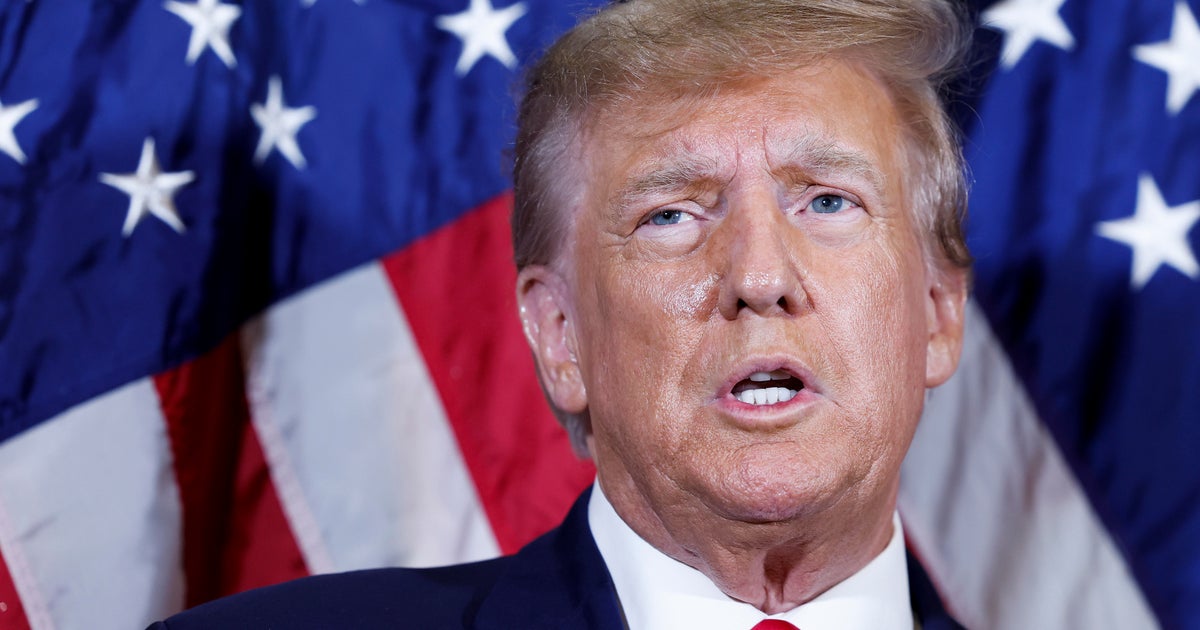Trump Officials End Gray Wolf Protections In Minnesota, Michigan And Wisconsin
BLOOMINGTON, Minn. (AP/WCCO) — Trump administration officials on Thursday stripped Endangered Species Act protections for gray wolves in most of the U.S., ending longstanding federal safeguards and putting states in charge of overseeing the predators.
The U.S. Department of Interior announcement just days ahead of the Nov. 3 election could lead to resumption of wolf hunts in Michigan, Minnesota and Wisconsin -- a crucial battleground in the campaign between President Donald Trump and former Vice President Joe Biden.
It's the latest in a series of administration actions on the environment that appeal to key blocs of rural voters in the race's final days, including steps to allow more mining in Minnesota and logging in Alaska.
The Minnesota-based wolf advocacy group Howling for Wolves said the political decision goes against both public sentiment in Minnesota and sound science.
"This rule puts the wolf on the path to extinction," said Maureen Hackett, the group's founder. "Instead of stripping their protections, we should put more effort into coexistence with wolves. We need a nonlethal wolf plan and continued funding for prevention methods for farmers and ranchers to ensure an intact and healthy wolf population, because the wolf is vital for our ecology and the legacy of future Minnesotans."
Both feared and revered by people, gray wolves have recovered from near extinction in parts of the country but remain absent from much of their historical range.
Federal wildlife officials contend thriving populations in the western Great Lakes region, Rocky Mountains and Pacific Northwest ensure the species' long-term survival. They argue it's not necessary for wolves to be in every place they once inhabited to be considered recovered.
"After more than 45 years as a listed species, the gray wolf has exceeded all conservation goals for recovery," Interior Secretary David Bernhardt said in a statement.
Former U.S. Fish and Wildlife Service director Dan Ashe agreed that wolves were recovered and said it's time for the agency to "move on" to help other imperiled wildlife. But he questioned the announcement coming so close to the election.
"It creates the perception that it's being done for political reasons," Ashe said in an interview.
Some biologists and former government officials who previously reviewed the administration's proposal for lifting protections said it lacked scientific justification. And wildlife advocates worry the move will make it harder, if not impossible, for wolves to recover in more regions, such as the southern Rocky Mountains and portions of the Northeast.
Their numbers also are sure to drop in the western Great Lakes area, as happened previously when federal controls were lifted, said Adrian Treves, a professor of environmental studies at the University of Wisconsin. Hunting seasons took their toll and research showed that poachers were emboldened by the absence of federal enforcement, he said.
"The science is 100 percent clear that there will be a spike in mortality," he said.
The decision keeps protections for a small population of Mexican gray wolves in the Southwest. It's the latest attempt over two decades to return management authority to the states. Courts have frequently rejected such moves after opponents filed lawsuits.
Environmental groups pledged to return to court yet again.
"Instead of pursuing further wolf recovery, the Fish and Wildlife Service has just adopted the broadest, most destructive delisting rule yet," said Collette Adkins with the Center for Biological Diversity.
An initiative on the Colorado ballot next week seeks to reintroduce wolves there in coming years. With federal protections removed, the U.S. Fish and Wildlife Service would have no say about moving ahead with the plan, if voters approve it.
Wolves were wiped out across most of the U.S. by the 1930s under government-sponsored poisoning and trapping campaigns. A remnant population in the western Great Lakes region has since expanded to some 4,400 animals in Michigan, Minnesota and Wisconsin.
More than 2,000 occupy six states in the Northern Rockies and Pacific Northwest after wolves from Canada were reintroduced in Idaho and Yellowstone National Park beginning 25 years ago.
Following a protracted courtroom battle that ended when Congress intervened, the Northern Rockies wolves are now under state management and are hunted in Montana, Wyoming and Idaho.
State officials also allowed hunting of Great Lakes wolves for several years last decade when protections were removed. The hunts ended when protections were restored under a 2014 federal court order.
Wolves were given initial federal protections in the late 1960s and listed as an endangered species in 1978, except in Minnesota where they were classified as threatened. A government-sponsored recovery effort had cost roughly $160 million as of last year.
Wolves have never been legally protected in Alaska, which has a population of 7,000 to 11,000.
(© Copyright 2020 CBS Broadcasting Inc. All Rights Reserved. The Associated Press contributed to this report.)



